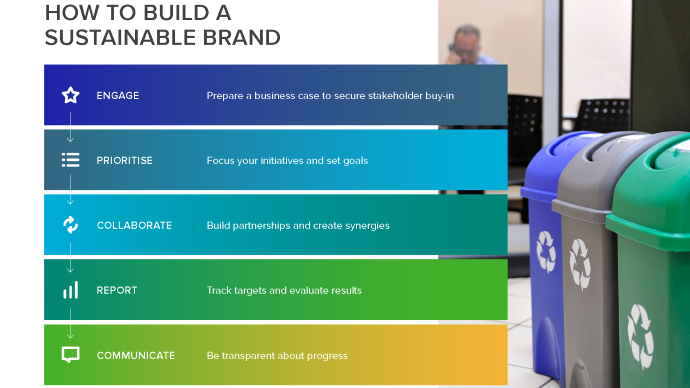Today, brands are facing increasing pressure from consumers, governments, NGOs, investors and insurance companies to have a positive and active role in protecting people and the planet.
As scientific researchers have constantly warned, the time to act is now if the UN Sustainable Development Goals (SDGs) are to be met by 2030. In fact, COP27 has stressed the urgency of public-private collaboration to ensure pledges and commitments turn into actions and boost the transition towards sustainable business models. Sustainability is no longer optional, and is increasingly becoming part of companies’ core business.
Understanding what sustainability means for a brand and learning how to create a successful strategy are key to ensuring the long-term operations of a business, and unlocking investment opportunities that help companies to remain competitive. According to Euromonitor International’s Voice of the Industry: Sustainability survey, in 2022 almost 90% of surveyed professionals consider sustainability extremely or very important to reduce their vulnerability and improve their response to future risks.
Although most companies are aware of the importance of tackling environmental, social and governance issues, global experts have mentioned that inefficient internal collaboration across departments is hindering the success of sustainability implementation. Sustainability is becoming a key part of the overall business, so the effective execution of sustainability strategies requires seamless collaboration between different business units to defeat the silo mentality and align individual teams’ priorities with the wider business vision.
This article proposes a five-step formula that can help brands plan a successful sustainability strategy:

Engage
The first and most critical step when planning a sustainability strategy is building a winning business case for sustainability. At this stage, companies usually face conflicts between sustainability and competitiveness, two areas that are traditionally seen as opposed to each other.
A convincing business case will focus on the connection between sustainability initiatives and business benefits (value creation and risk mitigation). This step is crucial to engage senior leaders on sustainability topics by answering questions such as, “What are the risks of ignoring responsible practices?”, and “How are sustainable consumers making purchasing decisions?”.
Prioritise
The second step is mapping and prioritising related risks and opportunities across different markets. Every industry has its own sustainability challenges and opportunities depending on the markets where they source, manufacture and sell their products. To successfully do so, companies need to consider country-specific needs, dynamics and legislation, as well as direct and indirect activities across the supply chain.
This step is key to attracting investors and ensuring good financial performance. The use of global frameworks, such as the UN SDGs, and Science Based Targets initiative, is now essential to set objectives and communicate progress in a universally recognised language. Identifying these risks and opportunities also helps to protect brand reputation and company operations, as well as complying with, or even getting ahead of legislation.
Collaborate
The third step involves working in partnership to accelerate sustainable business innovation. No company can completely eradicate environmental and social issues on its own, therefore combining resources, skills and talent can yield better solutions.
The best option for brands to overcome complex sustainability challenges and achieve bold commitments is to determine which activations can be achieved with internal resources, and then find gaps that require external expertise so they can build the right partnerships with key stakeholders.
Report
The next step involves selecting the right metrics to keep the sustainability strategy on track. There is no point in setting goals if you will never know whether you achieve them or not, as mostly, only what gets measured, gets managed.
As stakeholders are increasingly demanding more transparency and accountability from corporates regarding their sustainability efforts, demonstrating commitment through a measurable and compliant report is being demanded in more markets globally. Therefore, companies have primarily turned to Sustainability and CSR reports for recording performance, according to Euromonitor’s Voice of the Industry: Sustainability survey 2022. More incipiently, some global experts have mentioned their companies are now publishing ESG reports following regulatory and investor pressure.
Communicate
Communication plays an essential role in any sustainability plan. Brands that disclose their results and learnings, both internally (with shareholders) and externally (with governments, investors, customers, employees, business partners and local communities) are perceived as more transparent.
Although company websites and social media are still the preferred communication channels for sustainability initiatives, product labels and packaging saw the greatest increase in the period 2021-2022, according to Euromonitor’s Voice of the Industry: Sustainability survey 2022. Yet, as governments are scrutinising such claims for misinformation, companies need to use trustworthy third-party certifications, especially those that are widely recognised and understood by consumers, to increase their credibility and protect them from greenwashing accusations.
To understand more what sustainability means for a brand, download our white paper, Building a Sustainable Strategy: A Guide for Business Leaders.
Editor's note: This article was originally published in October 2019 and has been updated.

